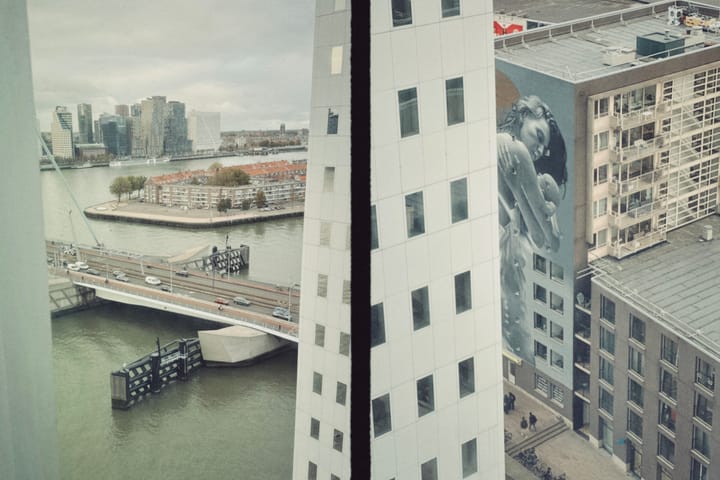Some Days as a Fractional Executive Feel Overwhelming And That’s Exactly When the Real Work Starts
Some days in fractional executive work hit different.

Not because something is wrong — but because everything comes together at once.
You jump between teams, projects, deliverables, expectations, and your own commitment to keep the organization moving forward. And even though that sounds intense, it’s also the moment where the job becomes its most meaningful.
Over time I’ve realised that fractional work isn’t about running someone’s daily operations.
It’s about helping people finally do the things they’ve been wanting to do for months, sometimes years — and removing everything that ever stood in their way.
That’s the part no one really talks about.
When You Walk Into a Team, You Notice the Tension Immediately
Whenever I start a new engagement, I can almost feel the weight of the unfinished projects in the room.
The website relaunch that has been “almost ready” for five months.
The new product pitch that is stuck somewhere between Design, Management, and “waiting for feedback.”
The brand refresh that everyone wants, but no one owns.
The operational gaps that everyone knows exist, but nobody has the mandate to change.
You see it in the team’s eyes — they’re tired of pushing the same rock uphill.
And then you walk in, and management says something along the lines of:
“We need you to focus on the things that actually move the needle.”
At that moment, you become the permission slip they’ve been waiting for.
The Moment You Say “I Don’t Care How It Was Done Yesterday”
Very early in every project I always say:
“I’m not here to judge the past.
I just want to make sure you have everything you need to make the change you want to make next.”
And every time I say that, the room relaxes.
A fractional executive comes in without the emotional baggage, without the internal politics, without the fear of stepping on toes. You’re not protecting a legacy. You’re not maintaining territory. You’re enabling progress.
When teams feel that you genuinely don’t care about yesterday — only about what tomorrow can look like — something shifts.
People start to open up.
They tell you what’s been blocked.
They share what they’ve always wanted to fix.
They pull out the folder with the idea they abandoned last year.
And that’s where the real work begins.
Projects Drag Out for Months — Until Someone Removes the Constraints
I’ve seen this pattern over and over again:
- A redesign that took eight months longer than expected
- A campaign concept that never got approved
- A product launch delayed because of “one missing piece”
- A team stuck in loops that no one pauses long enough to untangle
Not because people don’t want to deliver — they do.
But because they’re missing one or two key ingredients: ownership, clarity, and permission.
A fractional executive arrives and sees the situation without the fog.
Not because we’re better — but because we’re not embedded in the complexity.
That’s the advantage of being the outsider and the insider at the same time.
The First 90 Days Are Everything
In almost every engagement, the biggest mindset shift happens in the first 90 days.
This is when people realise that:
- You don’t see boundaries
- You’re not afraid to ask uncomfortable questions
- You’ll walk straight into the issue instead of around it
- You’ll move the project forward even if someone isn’t ready yet
- Momentum is not optional — it’s the job
When management supports this and gives you the trust and room to operate, the organization starts to change from the inside out.
You see creativity come back.
You see people shine again.
You see teams complete things they had mentally given up on.
Momentum is contagious.
Not Everyone Loves Momentum
Of course, not everyone is thrilled when things speed up.
There are always people who prefer the calm of a 9–5 rhythm.
Who feel uncomfortable when things suddenly move faster.
Who don’t understand why the team is pushing so hard or why changes stack up quickly.
And they stand out.
It’s not because they’re bad employees — far from it.
It’s because the pace reveals what they’re comfortable with.
As a fractional executive, this is where empathy matters.
You can’t bulldoze your way through an organization and expect lasting impact. Momentum without meaning creates resistance.
So you slow down where needed.
You explain the “why,” not just the “what.”
You make sure the short-term push ties into a long-term goal.
You give people time to adjust.
And most importantly: You make the changes feel intentional, not random.
The Secret: Ask the Questions No One Has Asked for Too Long
What most people don’t realise is that the real value of a fractional executive often comes from questions, not answers.
Questions like:
- What exactly stopped this from being delivered?
- Where did this project get stuck?
- Who needed clarity that they never received?
- What is the real root of the delay — the one no one wants to name?
- What would unlock this faster than anything else?
When you ask these questions, doors open. People talk. Problems surface. Solutions become obvious.
And suddenly, the project that felt impossible is moving again.
This Is Why I Love This Work
Fractional work is intense, yes. But it’s also incredibly human.
It’s about helping teams regain their spark. It’s about finishing the things that matter.
It’s about giving people the confidence and structure they need to move forward. It’s about creating momentum where there was stagnation.
And it’s about leaving the organization stronger than you found it. The deliverables matter, of course.
But the true impact?
It’s in the energy, in the clarity, in the shift in mindset.
When a team that’s been stuck for months suddenly moves — really moves — that’s when you know the job is working.
And that’s why I keep doing it.


